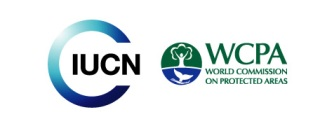PDF: Informal Trail Monitoring Protocols: Denali National Park and Preserve
Citation
Marion, J. L., & Wimpey, J. (2011). Informal Trail Monitoring Protocols: Denali National Park and Preserve (Blacksburg, VA: USDI Geological Survey, Patuxent Wildlife Research Centre, Virginia Tech Field Unit.
Download PDF
Summary
*Introduction Excerpt* The National Park Service (NPS) accommodates nearly 300 million visitors per year, visitation that presents managers with substantial challenges at some 394 park units across some 83.6 million acres of protected lands. An increasing number of visitors inevitably contribute negative effects to fragile natural and cultural resources. Such visitation-related resource impacts can degrade natural conditions and processes and the quality of recreation experiences. According to the NPS Management Policies: ―The fundamental purpose of the national park system, established by the Organic Act and reaffirmed by the General Authorities Act, as amended, begins with a mandate to conserve park resources and values…The fundamental purpose of all parks also includes providing for the enjoyment of park resources and values by the people of the United States.‖ (NPS 2006b, Section 1.4.3). However, what might appear to be dual mandates, visitation and resource protection, are clarified to reveal the primacy of resource protection. The Management Policies acknowledge that some resource degradation is an inevitable consequence of visitation, but directs managers to ―ensure that any adverse impacts are the minimum necessary, unavoidable, cannot be further mitigated, and do not constitute impairment or derogation of park resources and values‖ (NPS 2006b).
Managers of protected natural areas must achieve a careful balance between accommodating sustainable types and amounts of visitation and the protection of natural and cultural resources that may be harmed by visitor use. In high use areas, managers commonly apply a containment or concentration strategy to accommodate visitation by providing roads and developments such as parking areas, restroom facilities, and developed vista sites. These facilities focus visitor traffic on durable surfaces to contain trampling impacts and protect surrounding areas. Similarly, formal trail systems are generally regarded as an essential facility to provide access within moderate to high use portions of protected areas, accommodating recreational opportunities and protecting resources by concentrating visitor traffic on resistant tread surfaces (Marion & Leung 2001). Unfortunately, many older formal trails were not properly located, constructed, or maintained to sustain their intended uses. Preventing their degradation from recreational uses and natural processes such as rainfall and water runoff is often a substantial management challenge. Furthermore, it is generally recognized that formal trails cannot possibly access all locations within protected areas that visitors seek to visit.
In low use areas, managers commonly promote a dispersal strategy to accommodate visitation without formal site developments, facilities, or trails. A common objective is to preserve the area’s pristine natural conditions and processes, uninfluenced by human use and impact. The limited occurrence of visitor-created trails and recreation sites may be tolerated in transitional areas or near popular attraction features but more commonly these features are actively discouraged. This is generally accomplished by asking visitors to disperse their activities and restrict traffic to the most durable natural surfaces available. These are common low impact practices advocated by the national Leave No Trace program (www.LNT.org). Unfortunately, visitor traffic along common travel corridors, on sensitive vegetation or soils, or near popular destinations can result in the creation and proliferation of visitor-created informal trails.
The proliferation in number and expansion in length of informal trails (ITs) are perennial management concerns. Furthermore, because ITs are not professionally designed, constructed, or maintained, they have the potential to contribute substantially greater impacts to protected area resources than formal trails. Such impacts may be related to: 1) their poor design, including routes with steep grades or that directly ascend slopes, 2) multiple routes accessing the same destinations, and 3) routes through fragile vegetation, soils, habitats and rare flora, fauna, or archaeological sites. These attributes also make ITs more susceptible to tread impacts, including expansion in width, soil erosion, and muddiness.




